Social media is one of the fastest growing marketing channels, with new product rollouts happening almost weekly. Even though social media has been around a long time by internet standards, as marketers it's our job to ask: "Are we keeping up?"
Last month, I presented a webinar called "32 Social Media Tips to #CrushIt in Your Future Campaigns," all about current social media best practices across the channels most important to our social media strategy at NewsCred: Twitter, Facebook, and LinkedIn.
In the presentation, we covered a few things:
- The uses and demographics of Twitter, Facebook, and LinkedIn
- Best practices for each of those social channels
- Paid and organic strategies based on what has been successful for NewsCred
- How to measure the results and prove the ROI of your social media marketing
Social Channel Overview
As a framework, I highlighted some important statistics about the current landscape of social media:
- 52% of online adults now use two or more social media sites
- 56% of all online adults 65 and older use Facebook
- 53% of internet-using young adults ages 18-29 use Instagram
- 50% of internet users with college education use LinkedIn
What does this tell us? Your audience is on multiple platforms, and you should be too. To succeed with multi-platform marketing, you first need to make sure you understand each channel: its associations, how it works, and most importantly, who uses it.
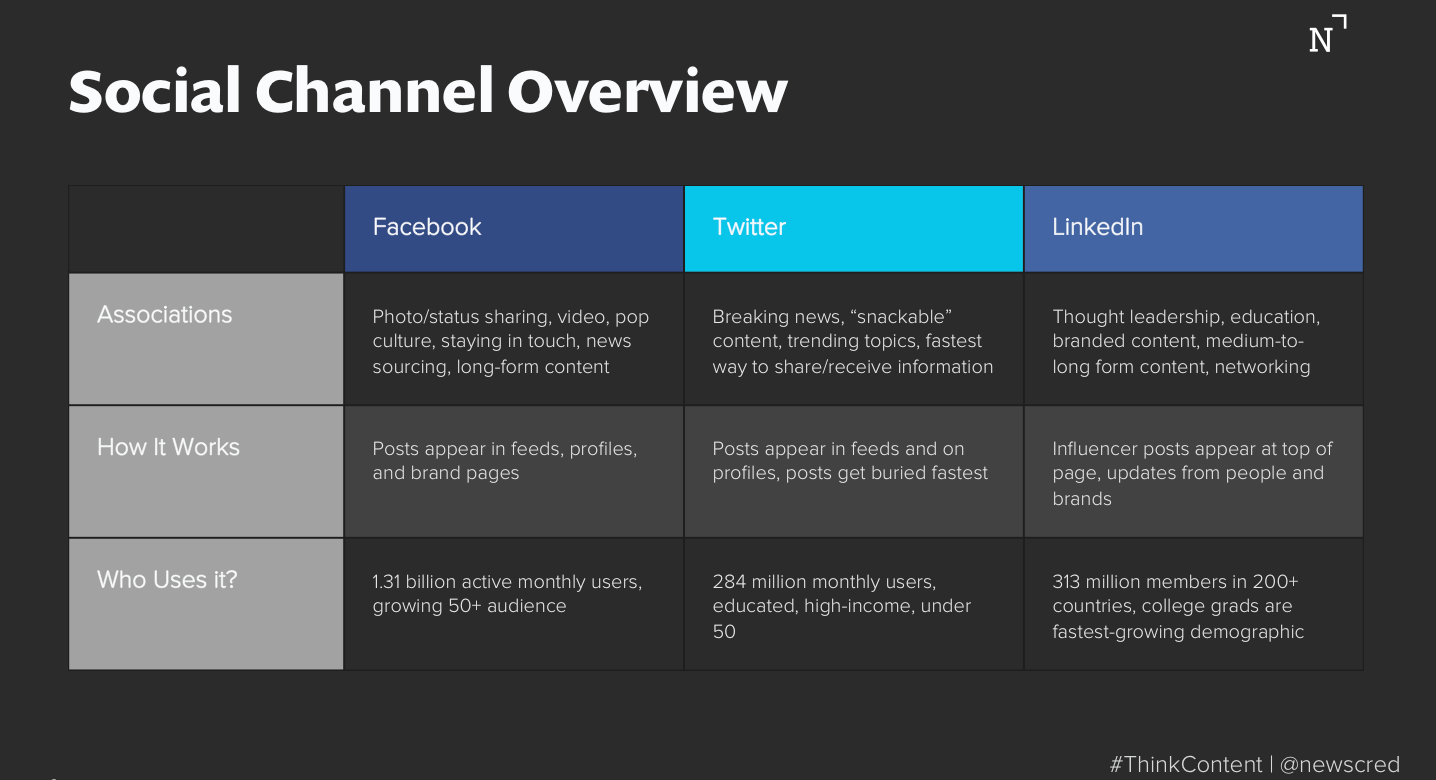
Best Practices
Once you’ve established what social media platforms make the most sense for your brand, it’s time to make sure your strategy is set. This is where understanding the best practices of each network is essential.
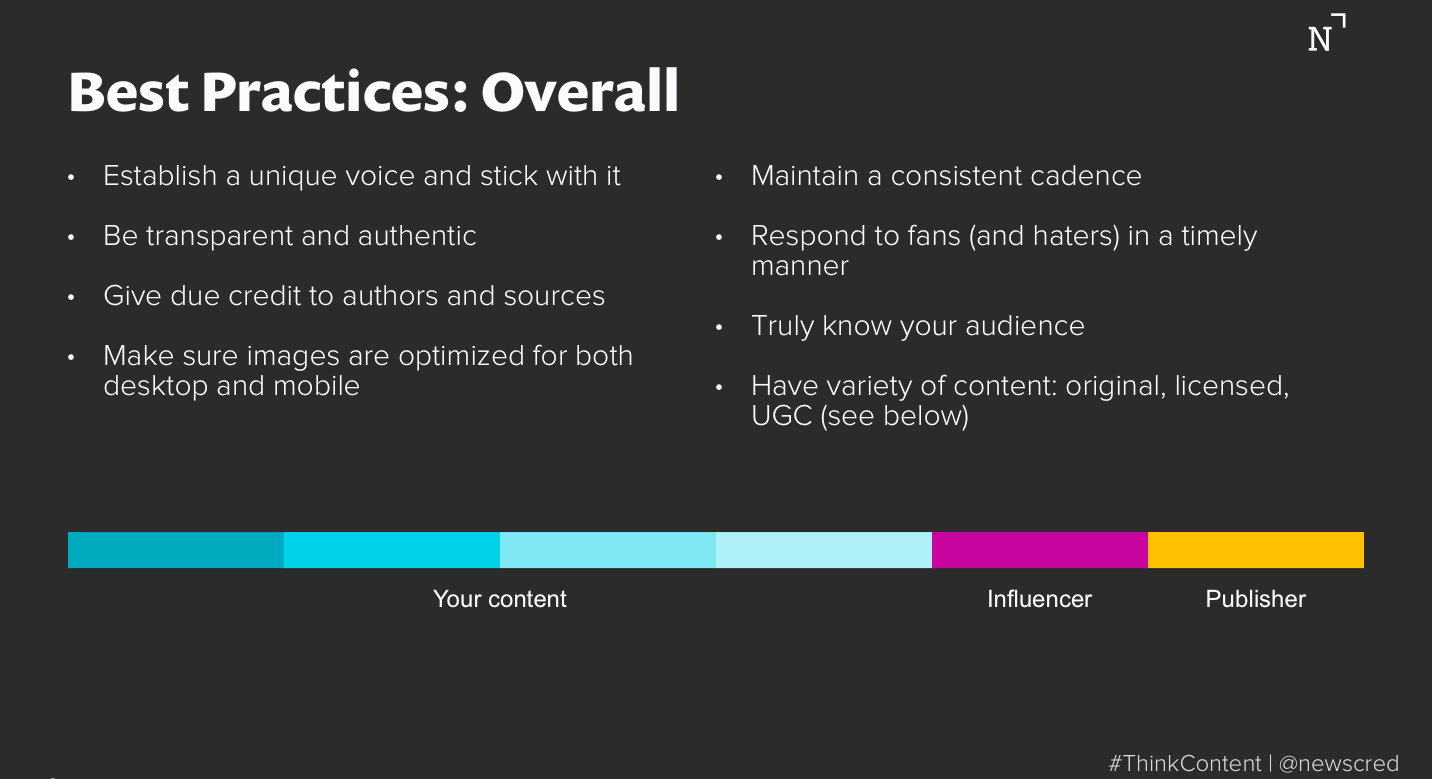
For example, follow the 4-1-1 Rule (illustrated above) when posting to social: 4 posts of your content (original, licensed, whitepaper/guide), 1 influencer post, 1 publisher post. Follow and mention influencers and publishers as often as possible and make sure your social accounts demonstrate interaction. You want to interact with who you’re trying to reach, so ask yourself, "Am I sharing the appropriate variety of content?"
I also shared a few channel-specific tips for maximizing your social media engagement:
- Tweet several times per day. The Twitter feed moves the fastest of all the social channels, and to stay top-of-mind you need to establish a publishing cadence that keeps up with the feed.
- Be visual. Tweets with photos are 150% more likely to be retweeted – and 78% of user engagement with a brand’s tweets are via retweeting.
- Say thanks. A simple "Thank you" is the most effective way to increase organic engagement and followers.
- Strike a balance. Content should be varied, with a mix of cultural and educational posts.
- Visually tell a story. Visuals are the most crucial element to Facebook – make sure they are high quality.
- Get native. The more native a post can look the better, and this goes for both paid and organic posts.
- Find your voice. LinkedIn is most authoritative of the three platforms due to its well-educated demographics, and your tone on LinkedIn should reflect this.
- Connect with people you care about. LinkedIn posts must be more than company updates and recruiting posts – you need informative content too.
- Think about timing. Most people aren't checking LinkedIn as frequently, or during the same hours, as the peak periods on Twitter or Facebook. Experiment with posting in the morning, high noon, or after "regular" office hours.
Organic Strategy
Supplementing your social strategy with a combination of organic and paid methods are one of the most important aspects of social media marketing. Knowing how to garner engagement with organic tactics is key, and these are some of the ways you can do this:
- Recycle your content: Keep posting until it’s dead.
- Grow your audience: Follow people you care about.
- It’s not all about you: Like or favorite other posts.
- Play to the strengths of each platform: Post the content that makes the most sense on each channel.
- Develop a unique hashtag for your brand: Like NewsCred did with #ThinkContent!
- Track everything, even your organic posts: The more information you have, the better your strategy will be.
- Use caution when trending: Use tweetable words or hashtags ONLY if they make sense.
My advice when it comes to using trending hashtags just for the sake of getting more visibility: unless it makes perfect sense for your brand, don't do it. You don't want to end up like this:
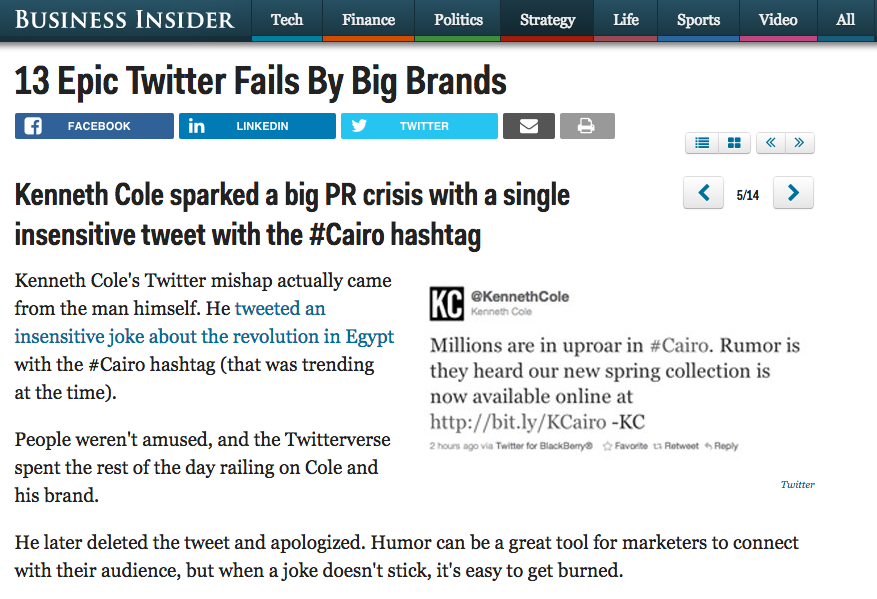
Paid Strategy
To extend your social reach and make the biggest impact, your organic channel needs to be supported by paid strategy. This is a great opportunity to A/B test what platform to use and what types of ads to try. Companies who test their strategies are 75% more likely to show ROI for content marketing than those who fail to test their strategies.
Before you get started, you need to define your targeted demand generation. Map out the content journeys of the people most important to your brand, and see what topics interest them, what they share, and what channels they frequent. The more you know about your audience, the better. Luckily, there's a tool for that.
Here are some paid strategies to get you started:
Twitter
- Run at least three tweets per campaign.
- Spend time researching what hashtags and phrases your audience uses – add to the “Keywords” section in your Twitter campaign.
- Think about the brands, publishers, and companies that your audience follows – add to “Handles.”
- Once you have a targeting formula, keep using it until you start to see a drop off.
Facebook
- Similar to the organic strategy we discussed, ask yourself: “How can this look the most native?”
- Segment your audience based on location, age, gender, interests, behaviors, connections, etc.
- Text on visuals must adhere to Facebook's 20% rule (only 20% of the image can contain text).
- Be choosy about your ad placement – for example, Desktop News Feed does not look the same as Desktop Right Column.
LinkedIn
- This is the best platform to promote high-value content.
- It is also the best platform to segment your audience and get very granular with targeting.
- We found that LinkedIn sponsored stories yields higher quality and value leads than Google Adwords. 60% of leads are medium-high quality vs. 20% coming from Google Adwords.
- We also found that every dollar invested in LinkedIn Sponsored Updates yields more than $17 in revenue, almost 6x the ROI of Adwords.
Measuring the Results
KPI measurement is essential for all marketing, especially on social media - but only 21% of marketers say they are successful at tracking ROI.
While metrics are key, there is not a one-size-fits-all measurement on social. Each platform has a unique set of KPIs that should be analyzed and measured.
I shared this breakdown of KPIs per channel:
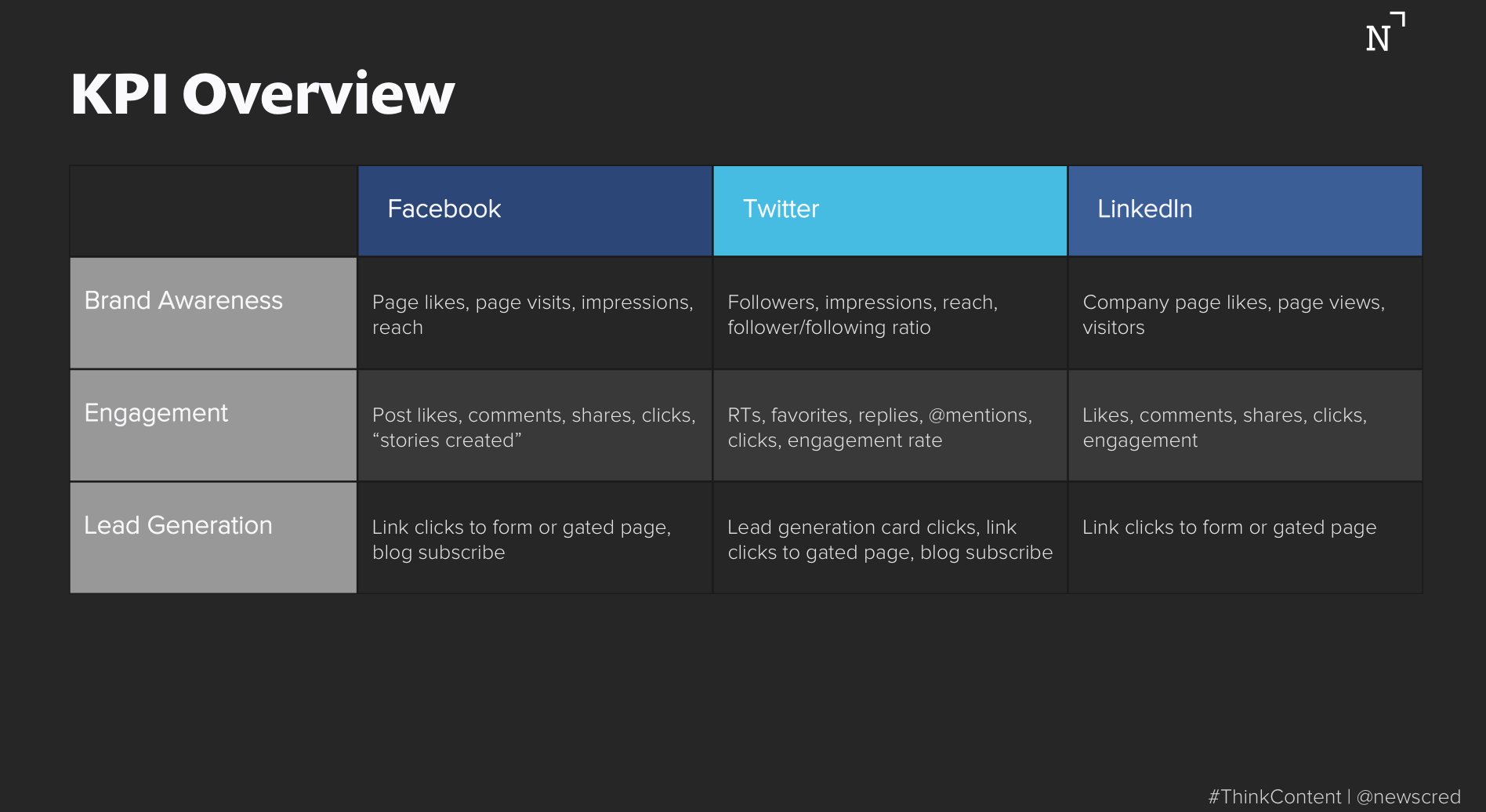
You need to analyze your content on both a macro and micro level. For example, looking at your content's performance over time, then the social lift, and finally the individual posts themselves:
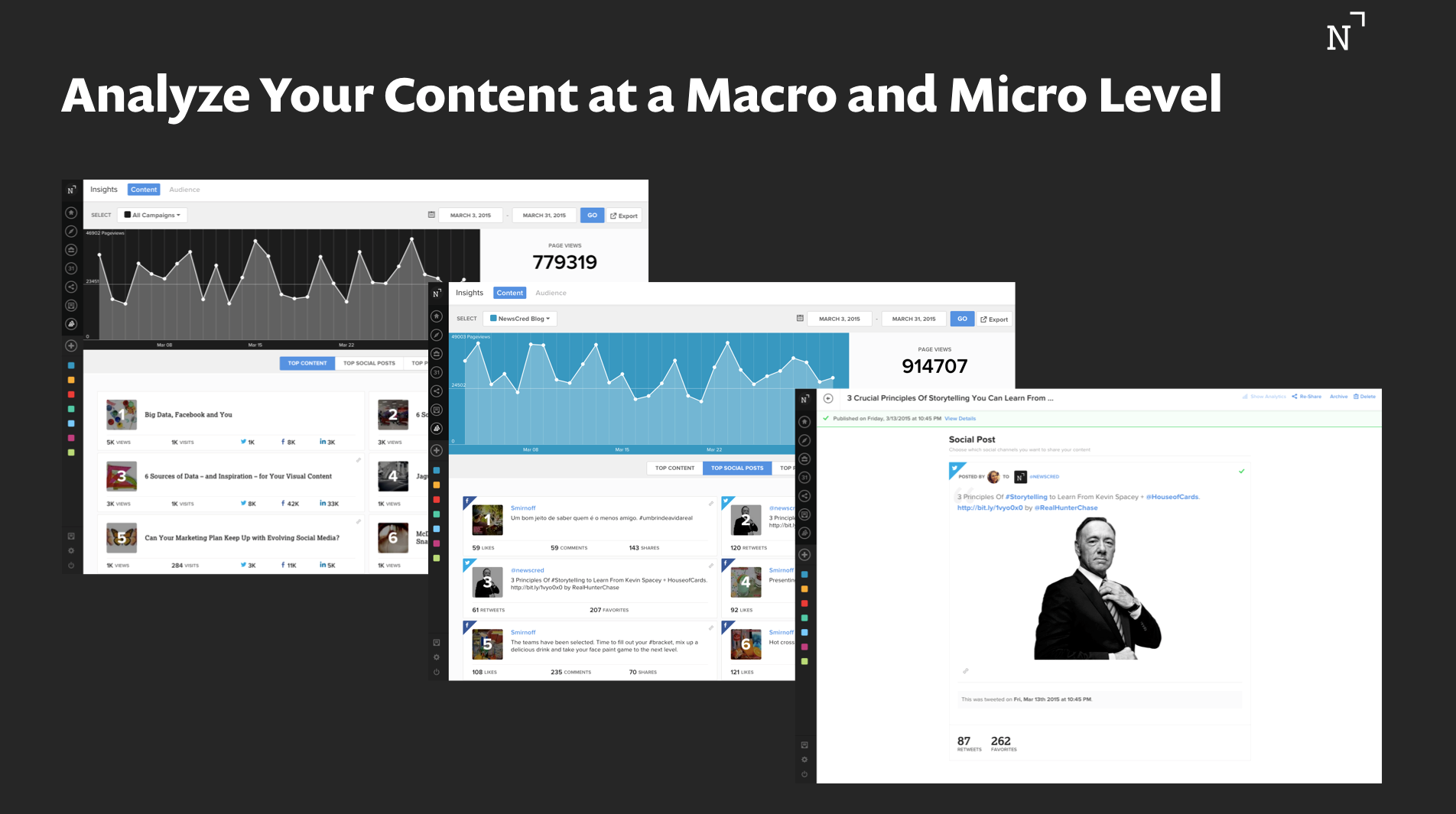
By analyzing our own content and social, we found these results:
- Increase your cadence and consistency. As we scaled our content creation and publishing, engagement and followers scaled in direct proportion.
- Social ad spend directly related to reach and engagement. Not only does social promotion increase unique visitors, we found that we were targeting the right users and reaching the right audience.
- Our social sharing drive increases in reach, engagement, and conversions. Check out this next slide:
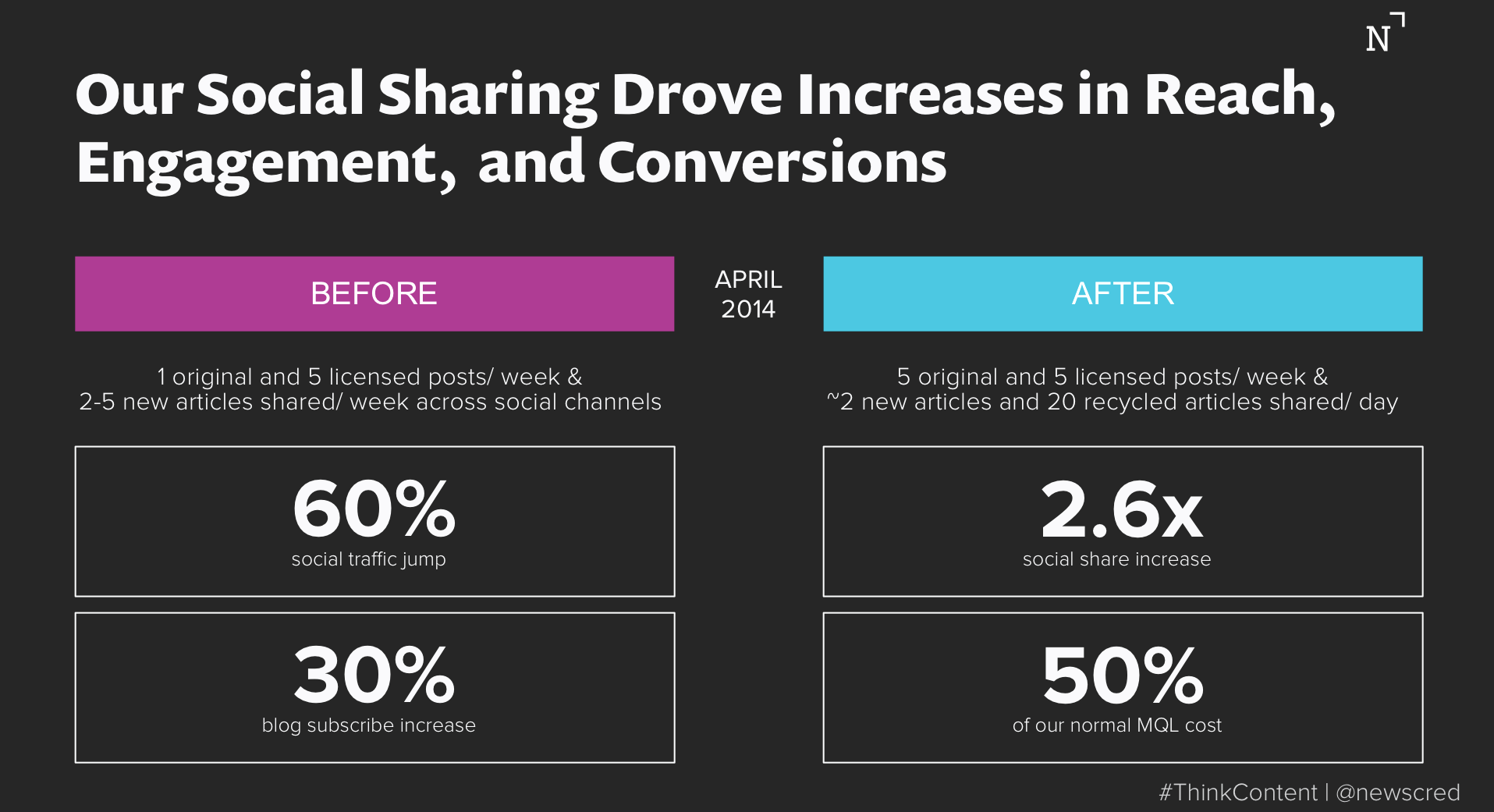
A Few More Pro Tips
Still need help with your social strategy? We made you a cheat sheet!
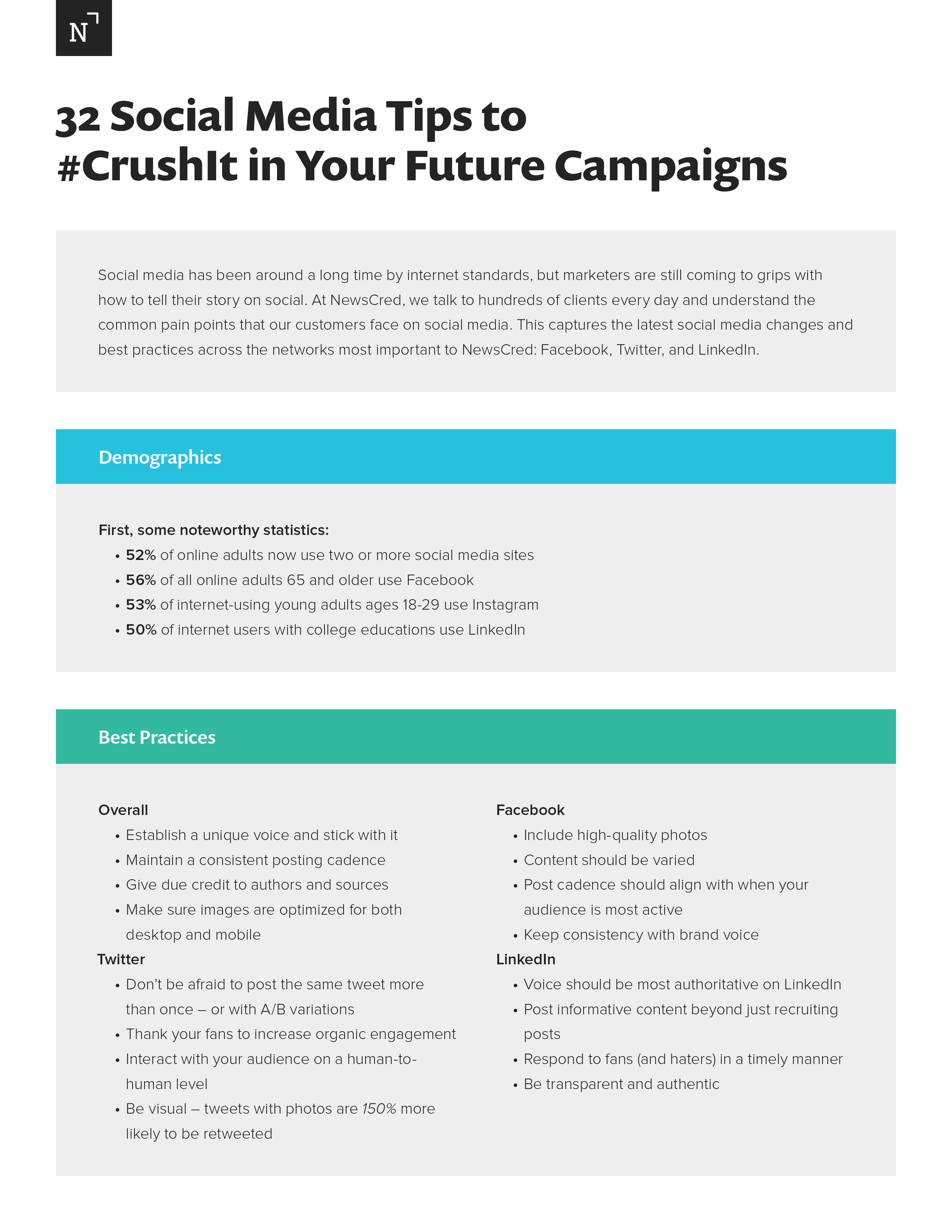
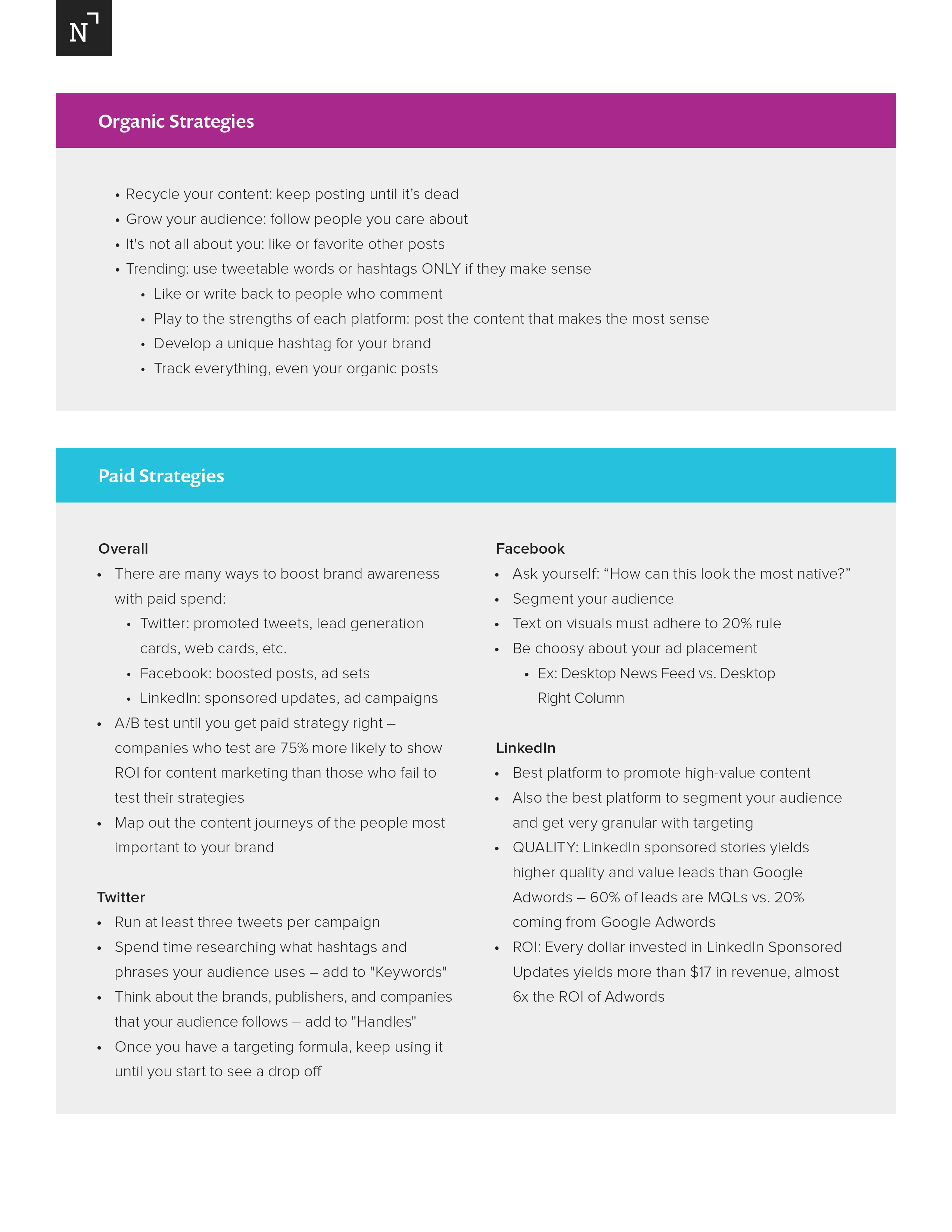
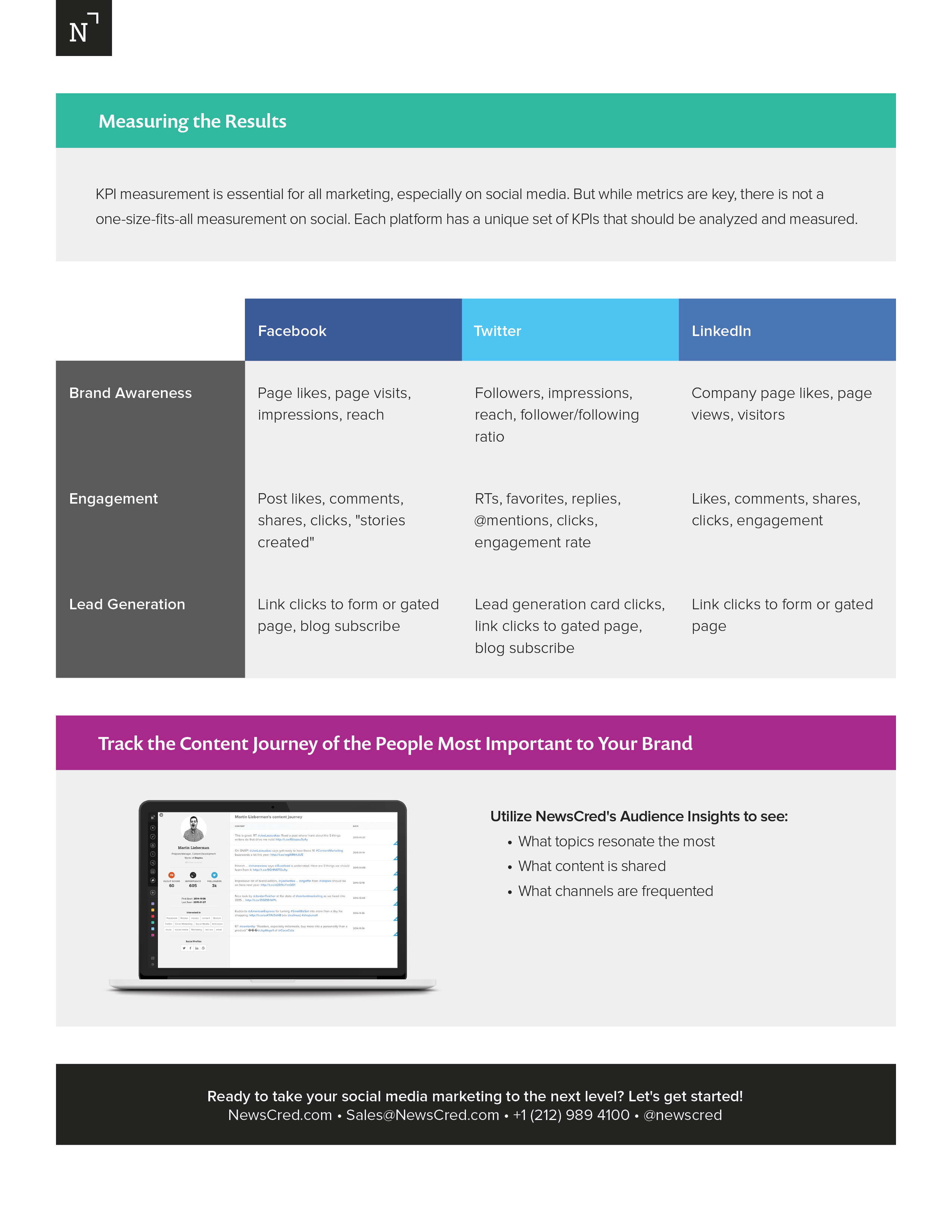
I wrapped up the webinar by giving a few more of my favorite advanced social media tips:
- When starting a tweet, add a period before the @ mention for tweets to show up in your timeline (not in replies).
- Know your audience. Leverage technology (like NewsCred!) that provides search, social, and audience behavior analytics to give you a full picture of who your audience is and what they want.
- Visuals are key – blatant, boring stock images won’t cut it.
- Think about the “burrito effect” – if someone has time to eat a burrito, they have time to check their social media accounts.
- Ideally, you should engage with everyone who @mentions you, across all platforms.
- Remember there’s a human on both sides of the computer – act like it and you’ll be rewarded!